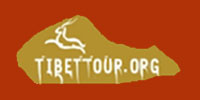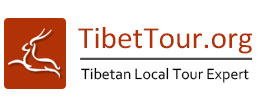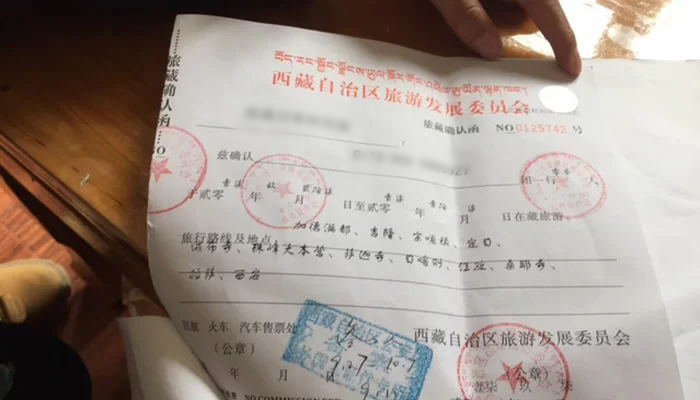Contents
 Best Time to Visit Nepal, Bhutan, and Tibet Together: Spring & Autumn (April, May, September, October)
Best Time to Visit Nepal, Bhutan, and Tibet Together: Spring & Autumn (April, May, September, October)
 Winter (November to February) is Also a Good Time to Visit Nepal, Bhutan, and Tibet Together
Winter (November to February) is Also a Good Time to Visit Nepal, Bhutan, and Tibet Together
 Summer (June to August) is the Monsoon Season in Nepal, Bhutan, and Tibet
Summer (June to August) is the Monsoon Season in Nepal, Bhutan, and Tibet
 Best Time to Do Everest Trekking in Nepal, Bhutan and Tibet: Slightly Varies in Three Places
Best Time to Do Everest Trekking in Nepal, Bhutan and Tibet: Slightly Varies in Three Places
 Best Time to Attend Festivals in Nepal, Bhutan and Tibet: Different Months for Popular Celebrations
Best Time to Attend Festivals in Nepal, Bhutan and Tibet: Different Months for Popular Celebrations
 More Details about the Weather in Tibet
More Details about the Weather in Tibet
 More Details about the Weather in Nepal
More Details about the Weather in Nepal
 More Details about the Weather in Bhutan
More Details about the Weather in Bhutan
 Conclusion
Conclusion
A journey to the stunning Himalayan regions of Nepal, Bhutan, and Tibet promises an adventure of a lifetime. Each place offers something special, from the peaceful Tibetan monasteries and vibrant Bhutanese festivals to the exciting treks in Nepal. However, to make the most of your trip, it is crucial to choose the right time to go. In this guide, we will explain the best time to visit Nepal, Bhutan, and Tibet together, helping you enjoy a smoother and more perfect trip to these places.
Best Time to Visit Nepal, Bhutan, and Tibet Together: Spring & Autumn (April, May, September, October)
Traveling to Nepal, Bhutan, and Tibet is possible year-round, but the best times are during spring and autumn, specifically in April, May, September, and October. These months offer the most favorable weather conditions across all three regions.
In spring, Nepal and Bhutan come alive with blooming flowers and lush landscapes, while Tibet enjoys pleasant temperatures and clear skies, ideal for exploring its high-altitude scenery. Autumn provides similar advantages, with dry, fresh air perfect for trekking and clear visibility for stunning views of Mount Everest and other Himalayan peaks.
 In Spring, Nepal comes alive with lush landscapes.
In Spring, Nepal comes alive with lush landscapes.Both seasons avoid the heavy monsoon rains of summer and the harsh winter cold, offering a comfortable climate for travel and outdoor activities throughout these diverse and beautiful regions.
Climate Data of Tibet, Nepal and Bhutan in Spring and Autumn
| Month | Region | Avg. Temperature (°C) | Sunny Days (days/month) | Precipitation (mm/month) |
|---|
| April |
Tibet |
4 to 15 °C |
17 days |
25 mm |
|
Nepal |
15 to 25 °C |
22 days |
15 mm |
|
Bhutan |
8 to 20 °C |
17 days |
25 mm |
| May |
Tibet |
8 to 18 °C |
22 days |
20 mm |
|
Nepal |
18 to 30 °C |
18 days |
40 mm |
|
Bhutan |
12 to 22 °C |
17 days |
40 mm |
| September |
Tibet |
7 to 17 °C |
17 days |
40 mm |
|
Nepal |
18 to 28 °C |
7 days |
225 mm |
|
Bhutan |
12 to 22 °C |
7 days |
200 mm |
| October |
Tibet |
2 to 12 °C |
17 days |
15 mm |
|
Nepal |
15 to 27 °C |
22 days |
65 mm |
|
Bhutan |
8 to 20 °C |
17 days |
45 mm |
Winter (November to February) is Also a Good Time to Visit Nepal, Bhutan, and Tibet Together
If you can't visit during the best travel seasons, consider traveling to Nepal, Bhutan, and Tibet from November to February. This winter period offers its own unique advantages and can be a great time for your trip.
In Nepal and Bhutan, winter weather is comfortable in lower regions such as the Kathmandu Valley and around Thimphu and Punakha. This season is ideal for low-altitude trekking and exploring cultural sites with fewer tourists, offering a more peaceful experience.
 In Bhutan, winter weather is comfortable in lower regions.
In Bhutan, winter weather is comfortable in lower regions.In Tibet, although temperatures drop in winter, they are generally milder than expected. The dry weather and clear skies make it an excellent time to visit Lhasa, the surrounding landscapes, and even Everest Base Camp. Just be sure to dress warmly. Additionally, traveling to Tibet in winter often means lower tour costs.
Climate Data of Tibet, Nepal and Bhutan in Winter (November to February)
| Month | Region | Avg. Temperature (°C) | Sunny Days (days/month) | Precipitation (mm/month) |
|---|
| November |
Tibet |
2 to 13 °C |
29 days |
2 mm |
|
Nepal |
12 to 24 °C |
25 days |
10 mm |
|
Bhutan |
5 to 15 °C |
23 days |
8 mm |
| December |
Tibet |
-1 to 9 °C |
29 days |
1 mm |
|
Nepal |
8 to 21 °C |
26 days |
5 mm |
|
Bhutan |
2 to 13 °C |
22 days |
6 mm |
| January |
Tibet |
-3 to 7 °C |
30 days |
1 mm |
|
Nepal |
7 to 20 °C |
25 days |
7 mm |
|
Bhutan |
1 to 12 °C |
21 days |
7 mm |
| February |
Tibet |
-1 to 10 °C |
27 days |
1 mm |
|
Nepal |
10 to 22 °C |
23 days |
10 mm |
|
Bhutan |
3 to 15 °C |
20 days |
9 mm |
Summer (June to August) is the Monsoon Season in Nepal, Bhutan, and Tibet
It is not recommended to visit Nepal, Bhutan, and Tibet during the summer months of June to August, as this is the monsoon season in all three regions.
During these months, you will encounter regular rainfall and higher humidity, especially in Nepal and Bhutan. While the rains make the landscape lush and green, they can also bring challenges such as muddy trails and occasional road closures.
In Tibet, the monsoon effects are lighter, with some rain but generally less disruption. If you don’t mind a bit of rain and want to see vibrant scenery, summer can still be a great time to explore. Just remember to pack for unpredictable weather and enjoy the lush beauty of the season!
 Summer is a good time to see vibrant scenery in Tibet.
Summer is a good time to see vibrant scenery in Tibet.Climate Data of Tibet, Nepal and Bhutan in Summer (June to August)
| Month | Region | Avg. Temperature (°C) | Sunny Days (days/month) | Precipitation (mm/month) |
|---|
| June |
Tibet |
8 to 18 °C |
20 days |
20 mm |
|
Nepal |
18 to 30 °C |
12 days |
125 mm |
|
Bhutan |
12 to 22 °C |
17 days |
125 mm |
| July |
Tibet |
10 to 20 °C |
15 days |
30 mm |
|
Nepal |
20 to 32 °C |
7 days |
275 mm |
|
Bhutan |
12 to 22 °C |
12 days |
225 mm |
| August |
Tibet |
10 to 20 °C |
15 days |
30 mm |
|
Nepal |
20 to 32 °C |
7 days |
275 mm |
|
Bhutan |
12 to 22 °C |
12 days |
225 mm |
Best Time to Do Everest Trekking in Nepal, Bhutan and Tibet: Slightly Varies in Three Places
The three Himalayan regions all boast ideal trekking conditions, though the best times for mountain treks vary slightly in each area.
In Nepal, the prime seasons for Everest Base Camp trekking are pre-monsoon (March to May) and post-monsoon (September to November). These periods offer clear skies, stable weather, and dry trails, providing stunning views of Everest and ideal conditions for the challenging trek.
In Tibet, the best time for Everest Base Camp trekking is from April to June and September to October. During these months, you'll experience milder weather and breathtaking views of the Himalayas, with minimal cloud or fog allowing for clear views of Everest's summit.
 Visiting Tibet Everest Base Camp in August to see the clear views of the world summit.
Visiting Tibet Everest Base Camp in August to see the clear views of the world summit.In Bhutan, the optimal trekking season is from October to November. Autumn brings clear skies and crisp air after the monsoon, making it a great time for exploring regions like Bumthang and Samtengang.
Best Time to Attend Festivals in Nepal, Bhutan and Tibet: Different Months for Popular Celebrations
Tibet, Nepal, and Bhutan host colorful local festivals year-round, allowing you to have a deep dive into their rich cultures and customs.
Tibet's popular festivals mainly occur in summer, from May to August. The Saga Dawa Festival in late May celebrates Sakyamuni's enlightenment, while the Shoton Festival in August features opera performances and grand Thangka displays. Horse racing festivals are also held across Tibet during the summer months.
 Mount Kailash Saga Dawa Festival in May is a great event in Tibet.
Mount Kailash Saga Dawa Festival in May is a great event in Tibet.In Nepal, major festivals like Holi and the Nepali New Year take place in spring (March to May). Dashain and Tihar are celebrated in autumn (September to November), marked by vibrant rituals, traditional music, and community gatherings.
In Bhutan, spring (March to May) hosts festivals such as Paro Tsechu, showcasing traditional dances and religious rituals. Autumn (September to November) is another peak season with events like Thimphu Tsechu.
More Details about the Weather in Tibet
The climate in Tibet varies significantly with elevation, resulting in notable differences between daytime and nighttime temperatures. You might feel comfortable in a T-shirt around midday but need a winter jacket by evening. Therefore, layered clothing is essential for any season when preparing for a trip to Tibet.
Tibet experiences four distinct seasons. Winters are very cold, while summers are warm but not excessively hot compared to lower-altitude regions. The wet season, primarily in July and August, requires packing waterproof clothing and footwear.
Spring (April to May) and autumn (September to October) are the best times to visit Tibet. These periods offer a balance of pleasant temperatures, lower precipitation, and manageable travel costs. Additionally, there are fewer tourists, making it easier to book transportation and accommodations.
 Namtso Lake in Tibet presents turqoise water and clear mountain views in early autumn.
Namtso Lake in Tibet presents turqoise water and clear mountain views in early autumn.More Details about the Weather in Nepal
Nepal’s climate is milder than Tibet's due to its lower altitude. Popular spots like Kathmandu and Pokhara rarely see subzero temperatures, though winter can bring chilly mornings and warm afternoons. In spring and autumn, temperatures can feel summery, so layering is recommended year-round.
Nepal experiences a rainy season from May to September. Kathmandu receives over 1,200mm of rain during this time, making up more than 85% of its annual total. Pokhara sees heavy rainfall from April to October, with about 3,700mm out of its annual 3,900mm.
The best times to visit Kathmandu are from March to May and October to November. If you don’t mind nighttime temperatures around freezing, winter is also a good option. For Pokhara, the ideal time is from October to March. Spring and late autumn are perfect for trekking in the high mountains, as winter can be harsh and summer rains may cause landslides.
More Details about the Weather in Bhutan
Bhutan’s climate varies with altitude and monsoon seasons. Higher elevations have cold winters and warm summers, while lowlands experience mild winters and hot summers. The wet season, from late spring to early autumn, brings heavy rainfall, making travel challenging. While Bhutan’s average altitude of about 2,450m facilitates acclimatization to high elevations.
Spring and autumn are the best times to visit, with winter being a shoulder season and summer the low season due to heavy rains and dense clouds. Rain is most intense from June to late September, though other months also see significant precipitation.
 Spring and autumn are the best times to visit Bhutan.
Spring and autumn are the best times to visit Bhutan.Cities in Bhutan have distinct climates despite their proximity. Thimphu, at 2,350m, has warm summers (15°C to 25°C) and cold winters, with temperatures occasionally dropping below 0°C. Punakha, at a lower altitude, experiences hotter summers (20°C to 30°C) and milder winters, with lows around 5°C and highs up to 20°C. In spring and autumn, temperatures are moderate, with Thimphu being slightly cooler than Punakha. Gelephu, in the south, is warm from November to March and hot the rest of the year.
Conclusion
The best times to visit Nepal, Bhutan, and Tibet are during spring and autumn, when you can enjoy favorable weather and stunning landscapes across these Himalayan regions. Winter offers a quieter, cost-effective alternative, making it a good time to visit as well. Summer brings monsoon rains, which might be less ideal but offers lush scenery and vibrant festivals. Regardless of the season, each period presents unique opportunities to explore the rich cultures and natural beauty of these captivating destinations. If you still have questions about visiting Nepal, Bhutan, and Tibet, feel free to contact us. We're happy to provide solutions and information to help you.


























 In Spring, Nepal comes alive with lush landscapes.
In Spring, Nepal comes alive with lush landscapes.
 In Bhutan, winter weather is comfortable in lower regions.
In Bhutan, winter weather is comfortable in lower regions. Summer is a good time to see vibrant scenery in Tibet.
Summer is a good time to see vibrant scenery in Tibet. Visiting Tibet Everest Base Camp in August to see the clear views of the world summit.
Visiting Tibet Everest Base Camp in August to see the clear views of the world summit. Mount Kailash Saga Dawa Festival in May is a great event in Tibet.
Mount Kailash Saga Dawa Festival in May is a great event in Tibet. Namtso Lake in Tibet presents turqoise water and clear mountain views in early autumn.
Namtso Lake in Tibet presents turqoise water and clear mountain views in early autumn. Spring and autumn are the best times to visit Bhutan.
Spring and autumn are the best times to visit Bhutan.










Ask a Quick Question